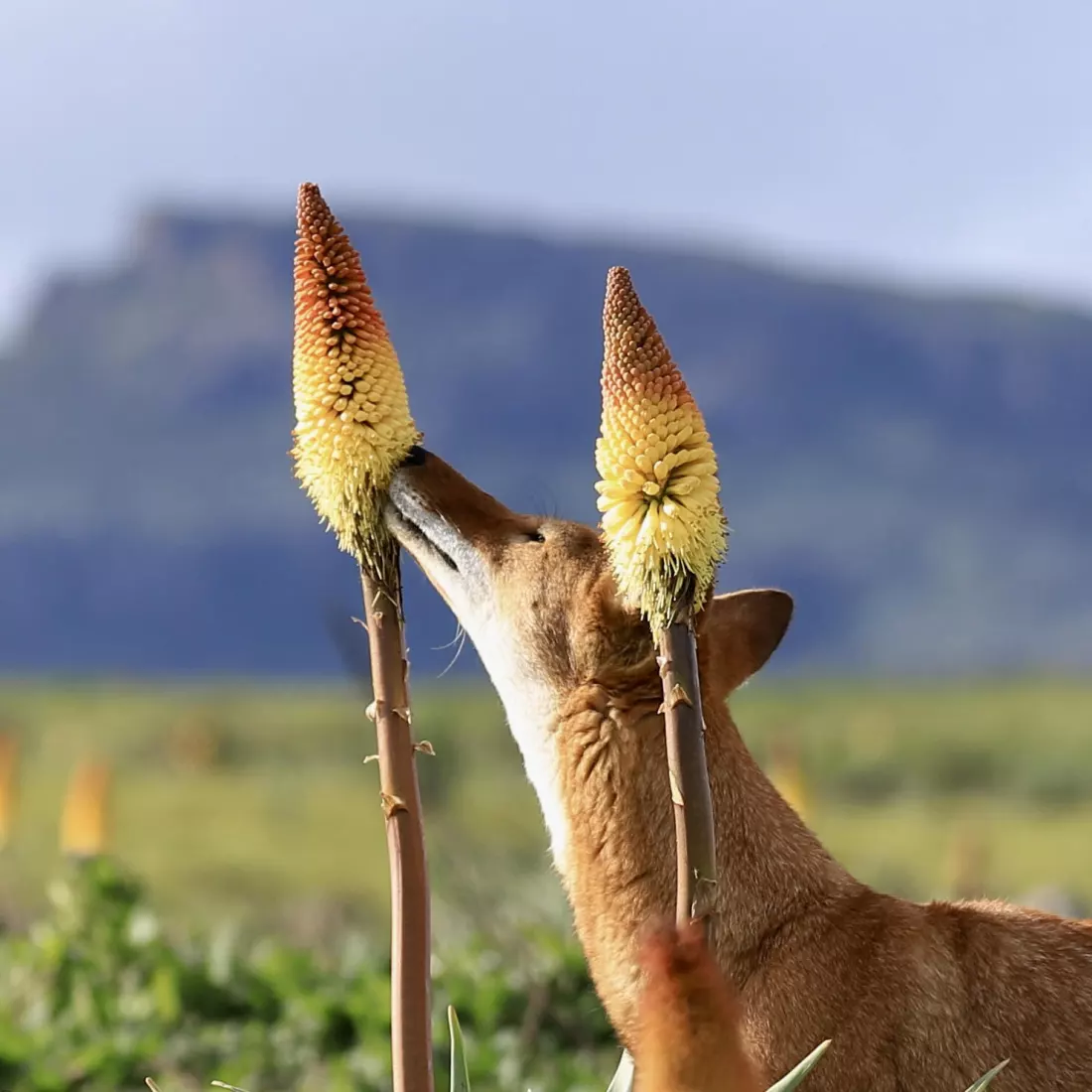Skyler Ware

When you purchase through links on our site, we may earn an affiliate commission. Here’s how it works.
A wolf licks a red and yellow flower
A wolf licking a red hot poker flower in Ethiopia. Research suggests these carnivores are eating the “pleasantly sweet” nectar, though it’s unclear whether they help pollinate the flowers. (Image credit: Adrien Lesaffre)Ethiopian wolves, known scientifically as Canis simensis, have been observed consuming the nectar of Ethiopian red hot poker flowers, or Kniphofia foliosa. This behavior marks them as the first large carnivorous species documented to engage in nectar feeding. The striking images captured during this feeding process highlight a surprising aspect of their diet.
Research indicates that these wolves are attracted to the “pleasantly sweet” nectar of the flowers. While their primary classification is as strict carnivores, this newfound behavior suggests a level of dietary flexibility that was previously unrecognized. The implications of this nectar consumption extend beyond mere feeding habits.
Furthermore, there is a possibility that Ethiopian wolves may contribute to the pollination of these flowers, although further studies are necessary to establish this connection definitively. This discovery not only enriches our understanding of the dietary habits of these wolves but also opens up new avenues for research into the interactions between carnivores and plant life in their ecosystem.
The research underscores the significant gaps in our understanding of one of the most endangered carnivores globally, as noted by Sandra Lai, an ecologist at the University of Oxford, in her statement regarding the findings.
The Ethiopian red hot poker plant, with its vibrant red and yellow blossoms, produces a sweet nectar that draws various pollinators, including insects and birds. Previous field observations had revealed that Ethiopian wolves were also seen licking these flowers, prompting researchers to investigate this behavior in greater detail.
In a recent study published on November 19 in the journal Ecology, researchers monitored six Ethiopian wolves from three distinct packs over a four-day period. While most wolves interacted with only a few flowers, one individual was observed visiting 20 flowers, and another 30 during a single feeding session. The wolves primarily licked the mature lower flowers, rich in nectar, which resulted in their muzzles becoming dusted with pollen, suggesting a potential role in pollination.

However, it’s not yet clear whether the wolves are effective pollinators. Nectar isn’t a significant part of their diet, so more research is needed to determine how often the wolves visit the flowers. And there isn’t evidence yet that a wolf could transfer enough pollen to another flower to pollinate it effectively.
Because the flowers attract many species, it’s also not clear how important any potential pollination from the wolves is to the flowers’ survival. Whether or not they act as pollinators, many other animals have been observed consuming red hot poker nectar as a sweet treat — including humans.
“I first became aware of the nectar of the Ethiopian red hot poker when I saw children of shepherds in the Bale Mountains licking the flowers,” study co-author Claudio Sillero, a conservation biologist at the University of Oxford, said in the statement. “In no time, I had a taste of it myself — the nectar was pleasantly sweet. When I later saw the wolves doing the same, I knew they were enjoying themselves, tapping into this unusual source of energy.”
Future research will involve determining the role of nectar in the wolves’ diet and working out whether the wolves really do act as pollinators, the researchers wrote in the study.
